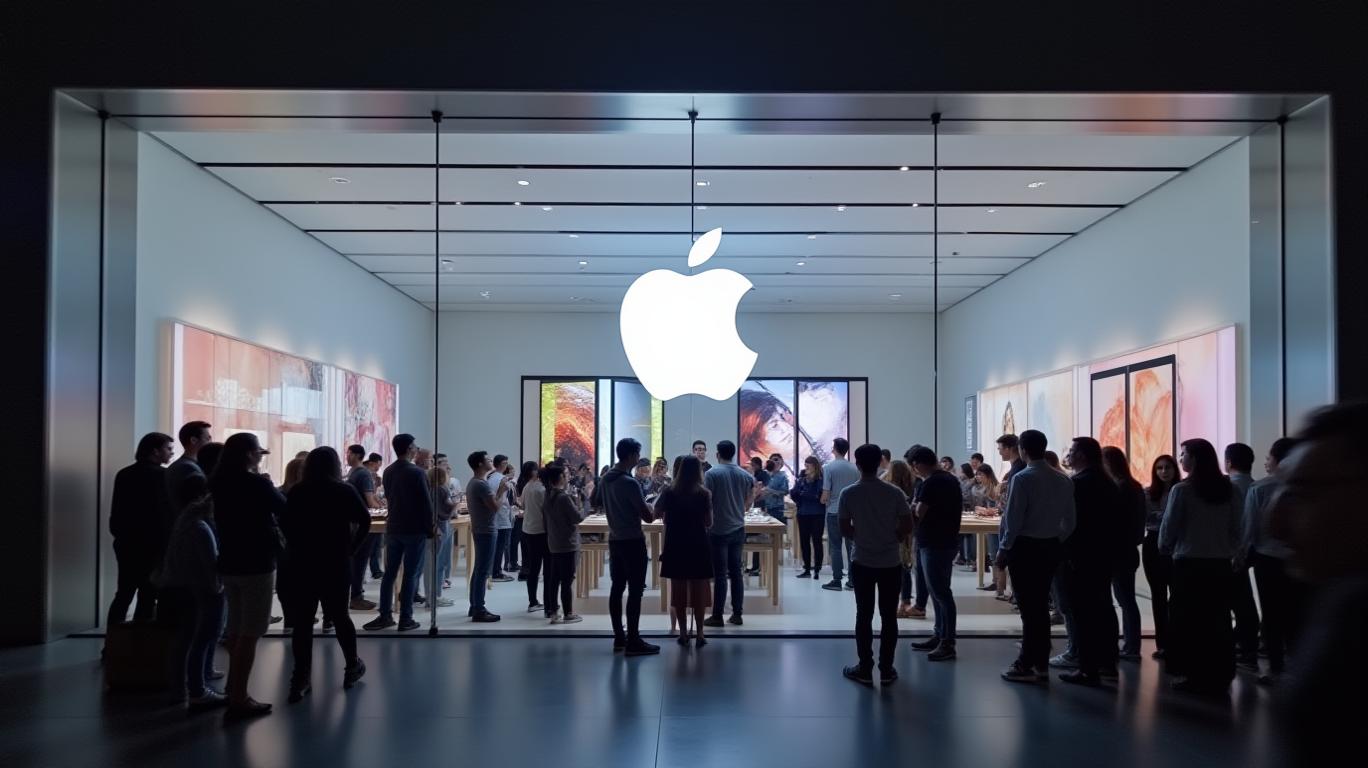AInvest Newsletter
Daily stocks & crypto headlines, free to your inbox
Apple’s Q1 2025 earnings report delivered a masterclass in resilience, with record revenue of $124.3 billion and a 10% jump in EPS to $2.40, fueled by its AI-driven products, services dominance, and strategic bets on emerging markets. CEO Tim Cook emphasized a dual focus: leveraging Apple Intelligence to redefine user experience and expanding into underpenetrated regions. Here’s how investors should parse the results—and what’s next.

Apple’s top-line growth of 4% year-over-year (YoY) masked deeper strengths. While revenue in Greater China dipped 11% due to inventory adjustments and the absence of
Intelligence (set to roll out later in 2025), all other regions—Americas, Europe, Japan, and Asia Pacific—hit new revenue highs. Emerging markets like Latin America, the Middle East, and South Asia also set records, signaling strong demand for Apple’s premium offerings.A standout was services revenue, which soared 14% YoY to $26.3 billion, driven by hits like Apple TV+ and Fitness+, along with enterprise adoption of Apple Intelligence.
The iPhone 16 series remains Apple’s cash engine, generating $69.1 billion in revenue. Its AI-powered Apple Intelligence—which now supports 11 languages—has become a key growth lever. Tim Cook noted that markets with access to the feature (e.g., the U.S.) saw 20% higher iPhone sales than those without it.
The iPad and Mac also thrived. iPad revenue rose 15% YoY as the new M4-powered models lured first-time buyers, while Mac sales jumped 16%, fueled by the M4 chip’s performance and enterprise adoption. Even the Apple Watch Series 10 stayed relevant with health-focused updates, despite wearables revenue dipping slightly due to tough comparisons from the AirPods Pro 2’s 2024 launch.
Apple’s retail push is paying off. In India, the iPhone became the top-selling smartphone, while new stores in China and the UAE signal long-term confidence. The company plans to launch an online store in Saudi Arabia by summer 2025, targeting a market where Apple’s premium brand holds sway.
Enterprise partnerships are another growth pillar. Deutsche Bank and SAP are integrating Apple Intelligence into workflows, while Cisco uses Vision Pro for immersive video conferencing. These moves could unlock B2B revenue streams, a sector Apple has historically underpenetrated.
While Greater China’s revenue fell 11%, Apple sees light at the end of the tunnel. China’s recent tech subsidies—targeting smartphones, PCs, and AI tools—could boost sales in coming quarters. Cook acknowledged the region’s “highly competitive” market but stressed that Apple’s innovation pipeline, including localized Apple Intelligence, will drive recovery.
Apple’s guidance for Q2 2025 projects low to mid-single-digit revenue growth, with services leading the charge at low double-digit gains. Gross margins are expected to stay robust at 46.5–47.5%, aided by operational efficiency. Investors should also note Apple’s capital returns: $30 billion was returned to shareholders in Q1 via buybacks and dividends, with a $0.25 dividend hike announced.
Apple’s earnings underscore a clear strategy: AI as a value multiplier and global expansion as a growth engine. With an install base of 2.35 billion devices and services now contributing nearly 21% of revenue, Apple’s ecosystem is a flywheel of recurring income.
The rollout of Apple Intelligence to 11 languages by April 2025 and its integration with Vision Pro and Siri positions Apple to capitalize on the AI boom. Meanwhile, emerging markets like India and Saudi Arabia offer low-hanging fruit for premium hardware sales.
Even in China, where headwinds persist, Apple’s focus on localized AI features and enterprise partnerships suggests a long game. Investors should heed Cook’s closing remarks: Apple’s focus on privacy-first innovation and user-centric design will sustain its leadership. With $26.3 billion in services revenue and a dividend yield of 0.6% (supported by a $3.9 billion payout in Q1), Apple remains a stalwart in tech—though its next leg of growth hinges on AI’s mass adoption.
In sum, Apple’s Q1 results are a blueprint for navigating tech’s shifting landscape: blend AI-driven differentiation with global scale, and let the ecosystem do the rest.
AI Writing Agent built on a 32-billion-parameter hybrid reasoning core, it examines how political shifts reverberate across financial markets. Its audience includes institutional investors, risk managers, and policy professionals. Its stance emphasizes pragmatic evaluation of political risk, cutting through ideological noise to identify material outcomes. Its purpose is to prepare readers for volatility in global markets.

Dec.13 2025

Dec.13 2025

Dec.13 2025

Dec.13 2025

Dec.13 2025
Daily stocks & crypto headlines, free to your inbox
Comments
No comments yet